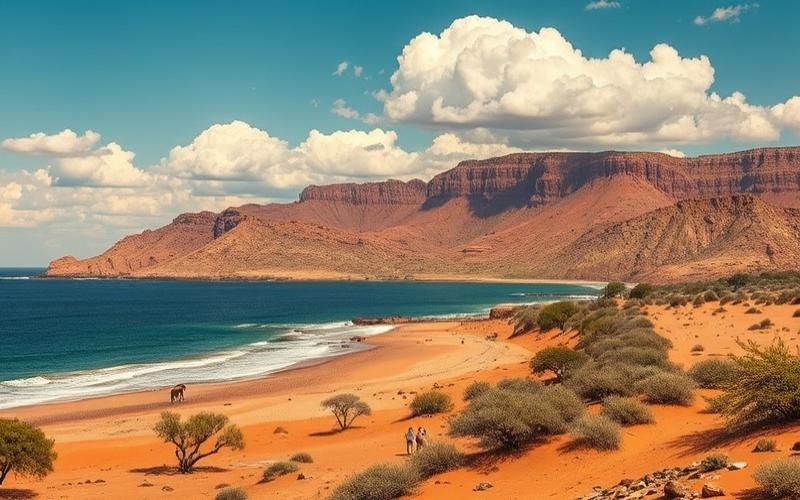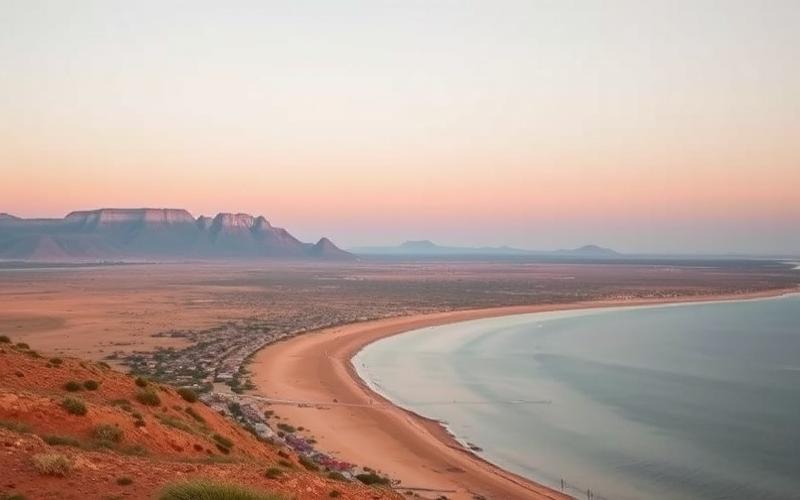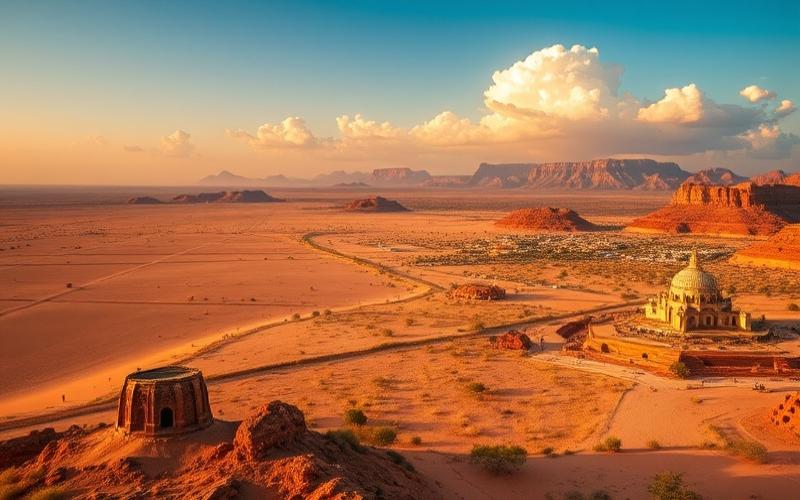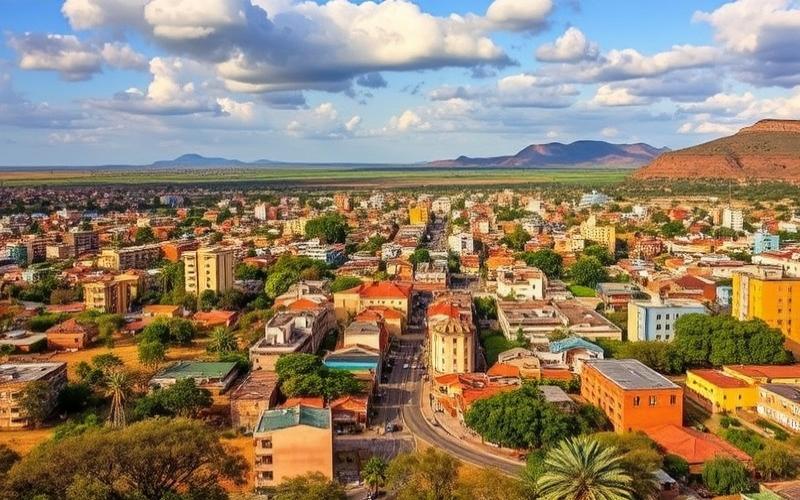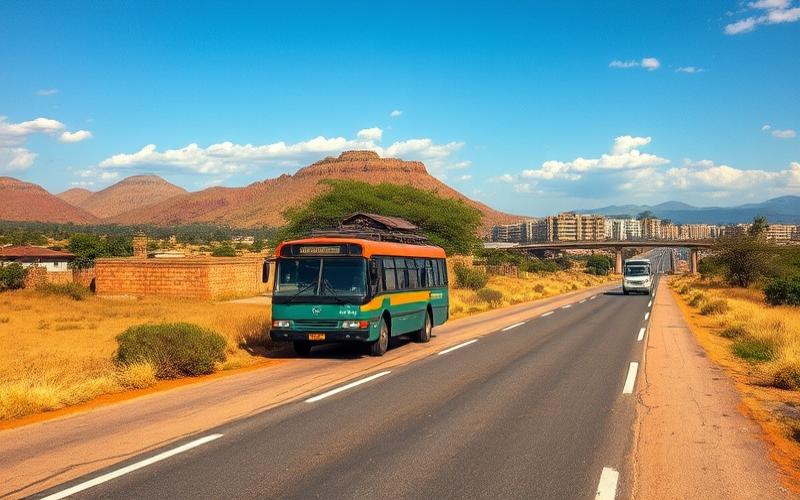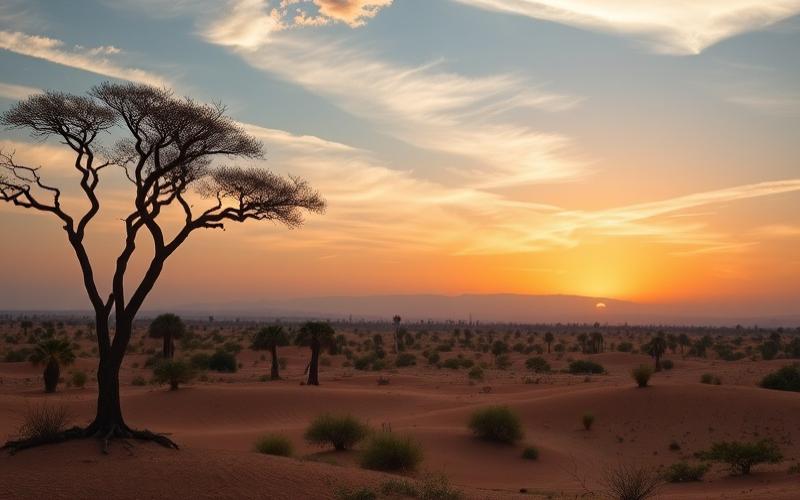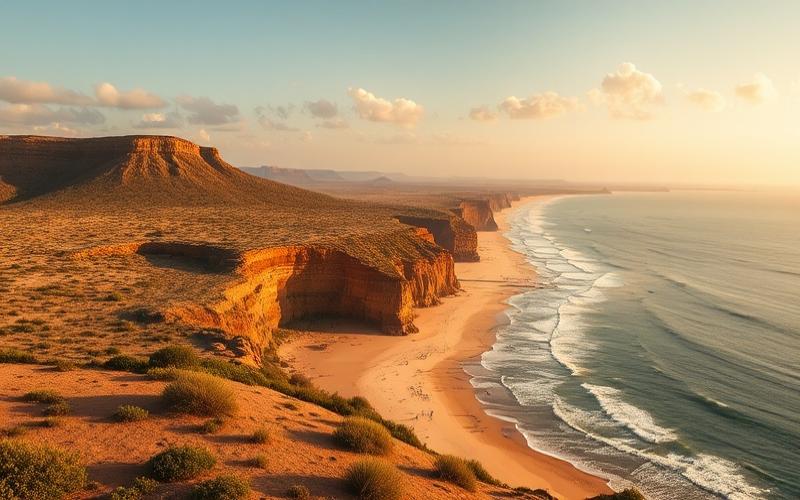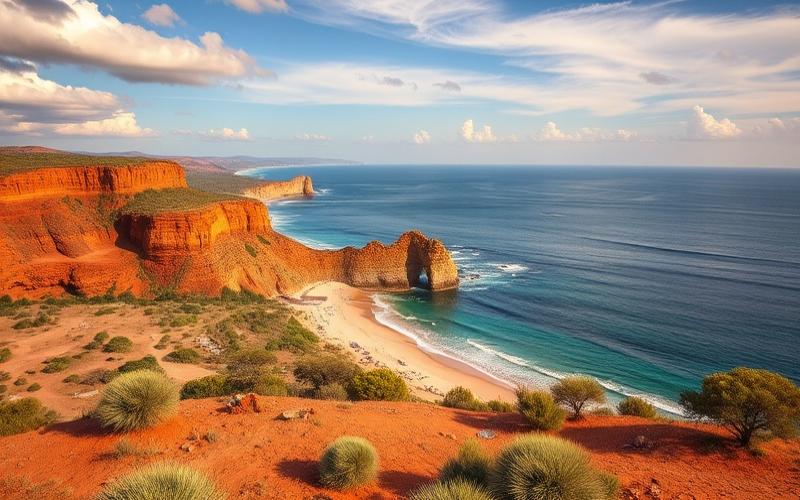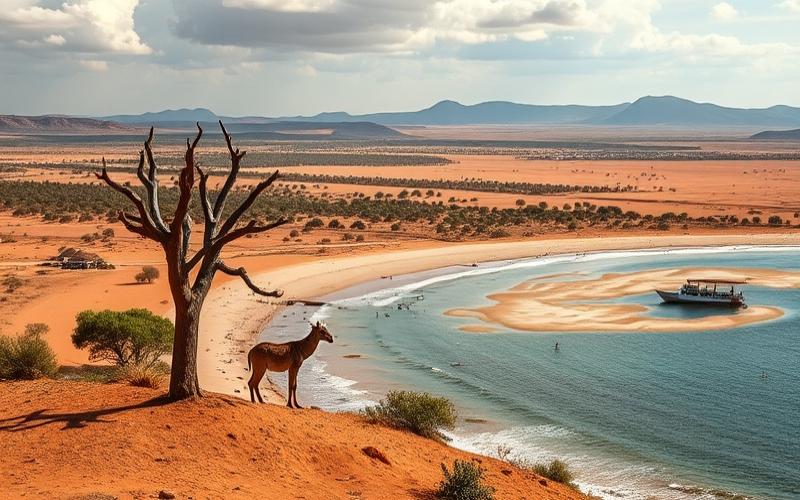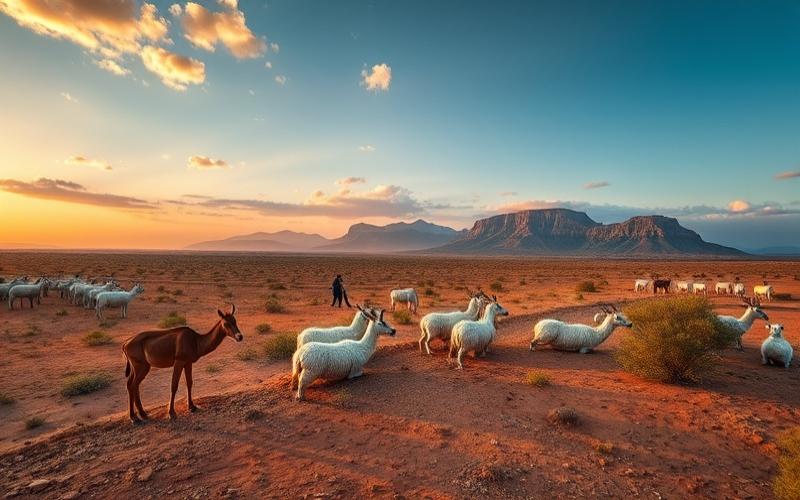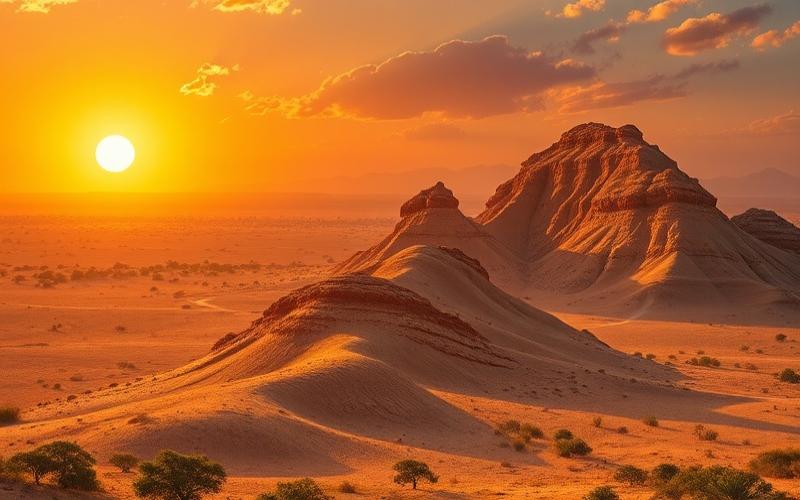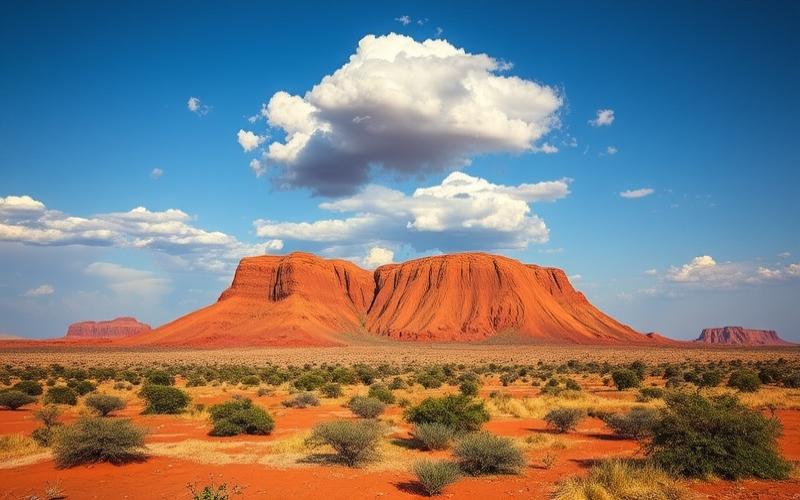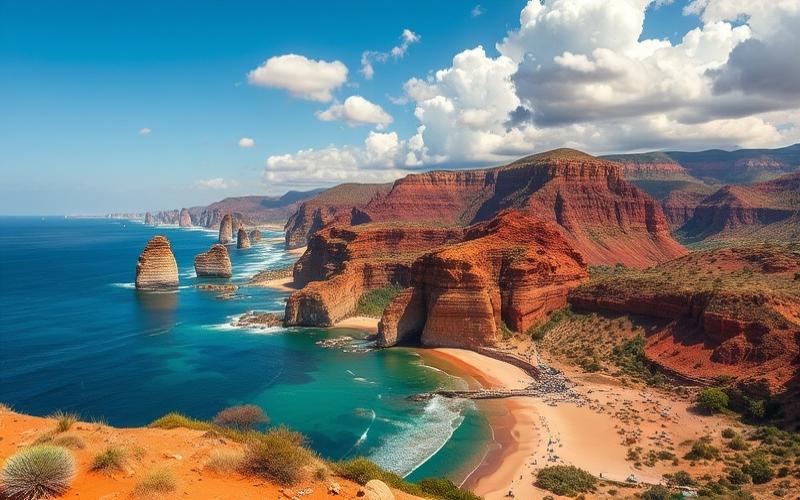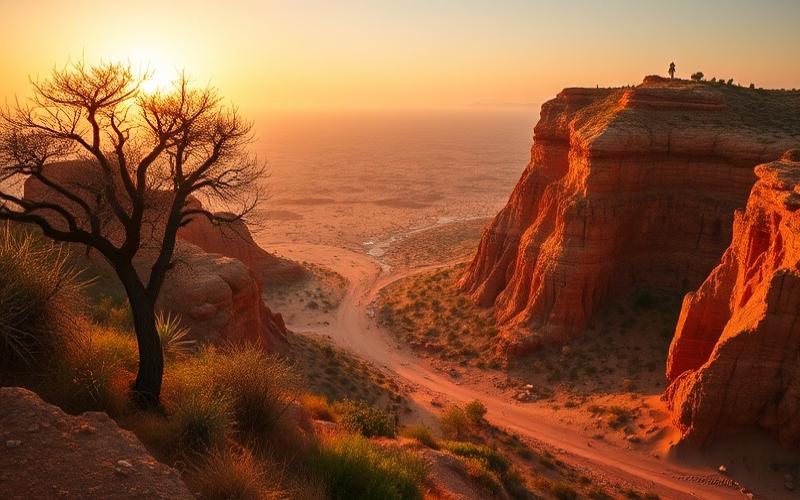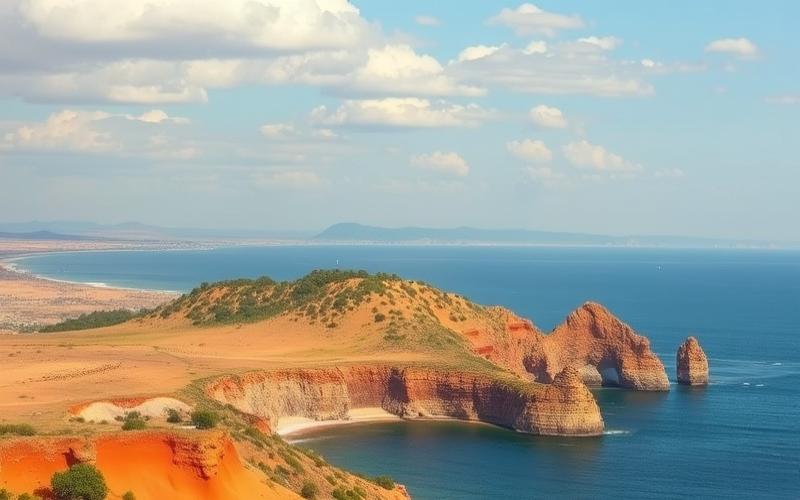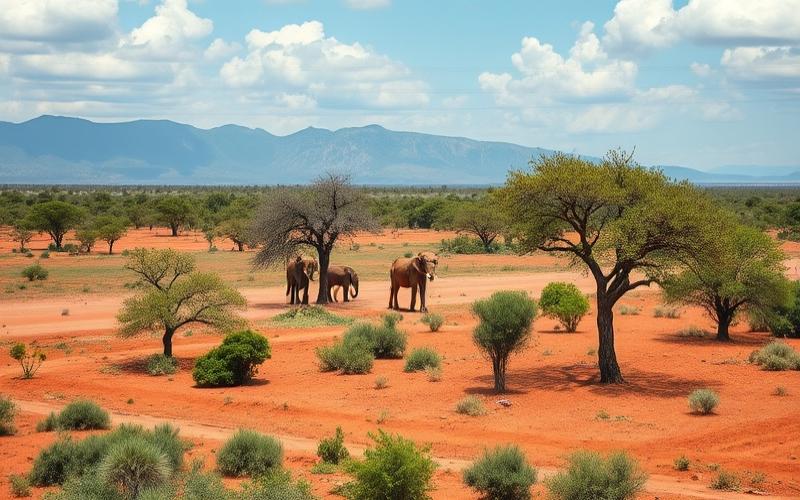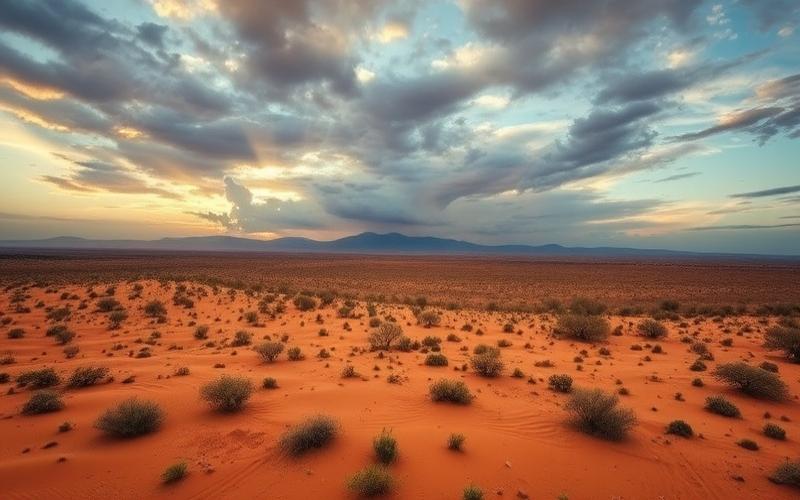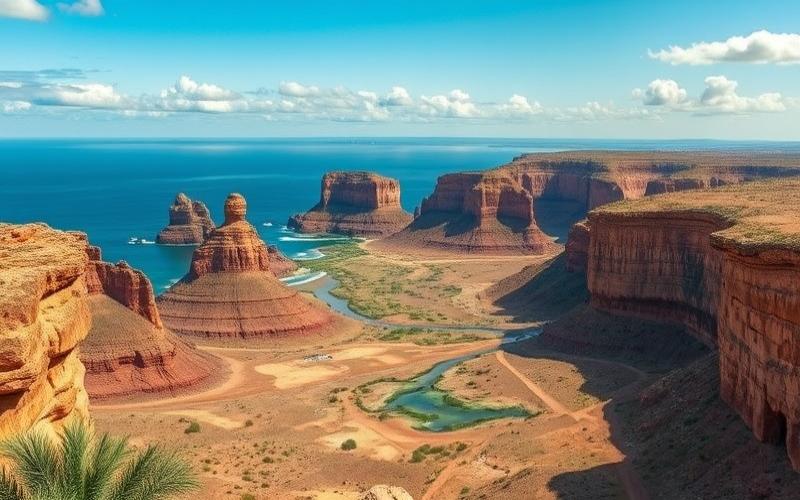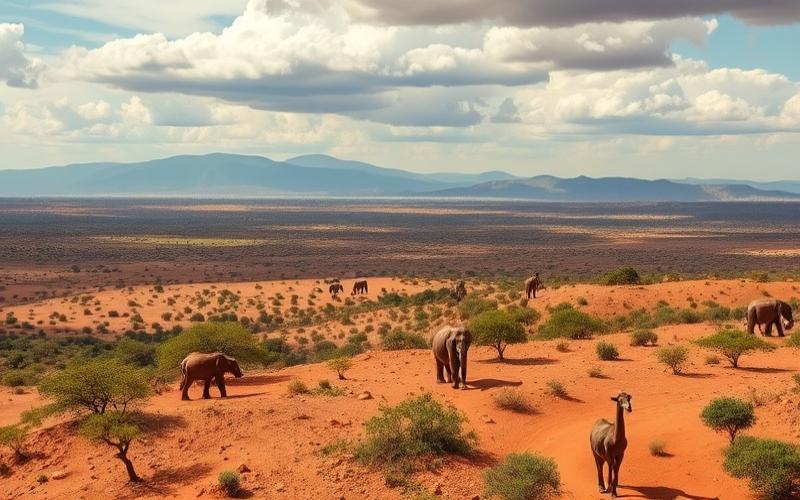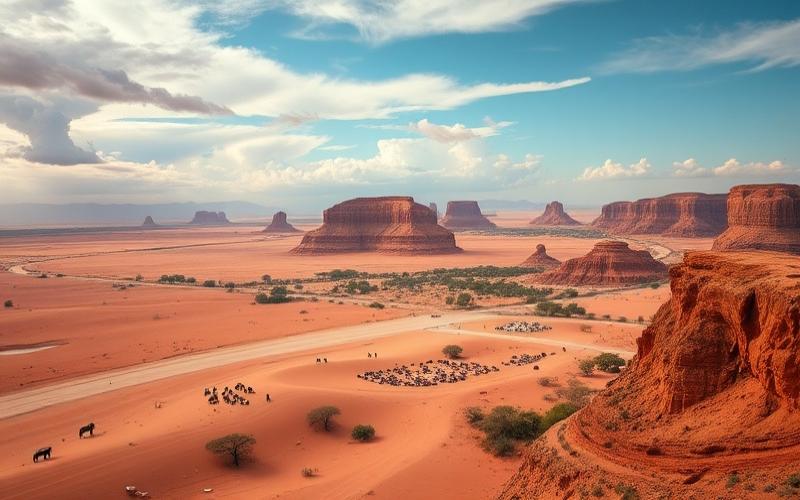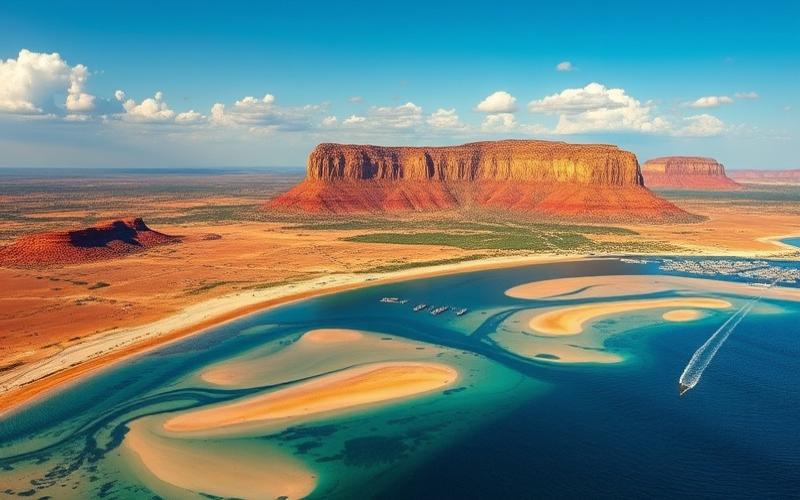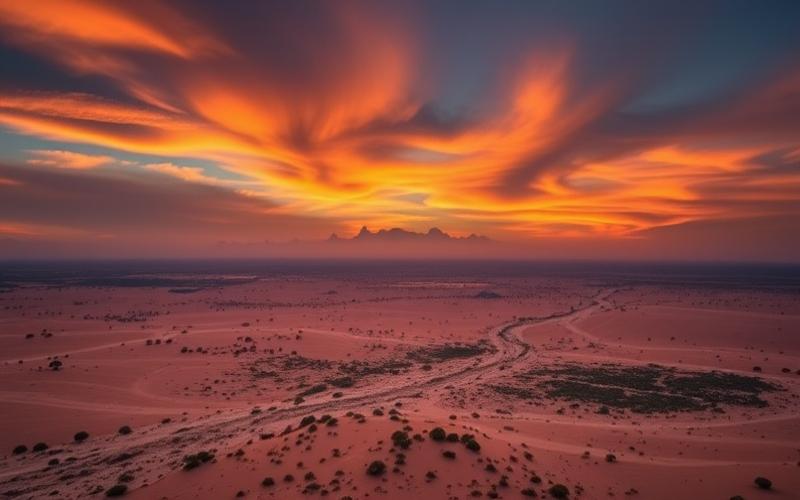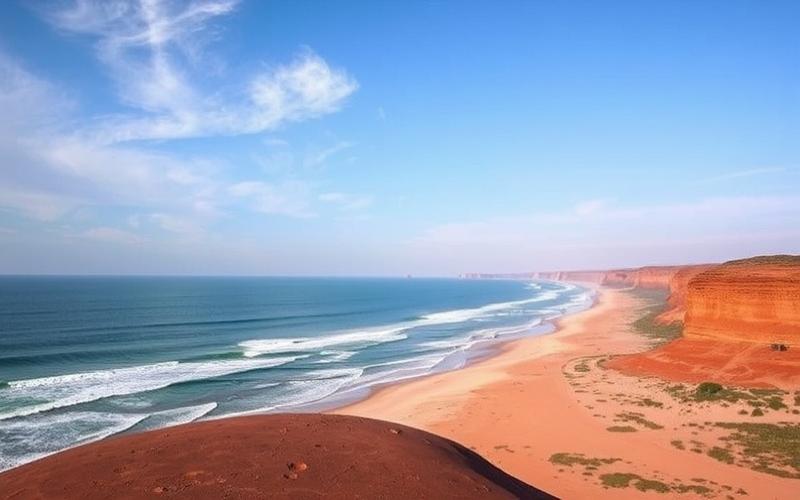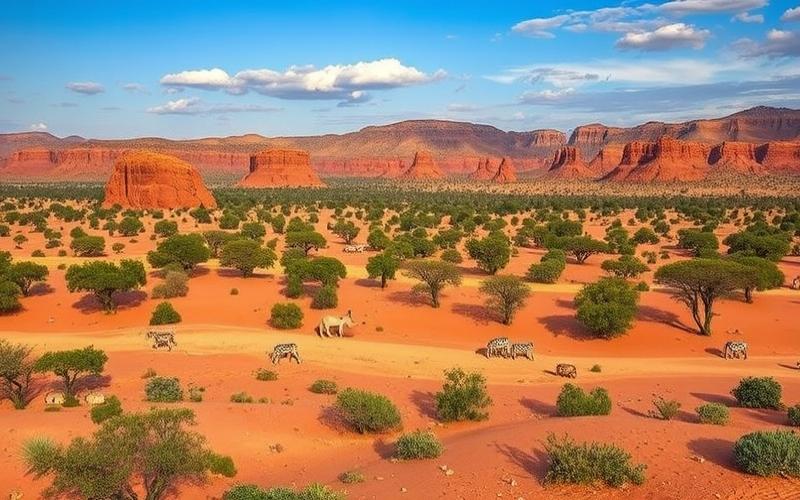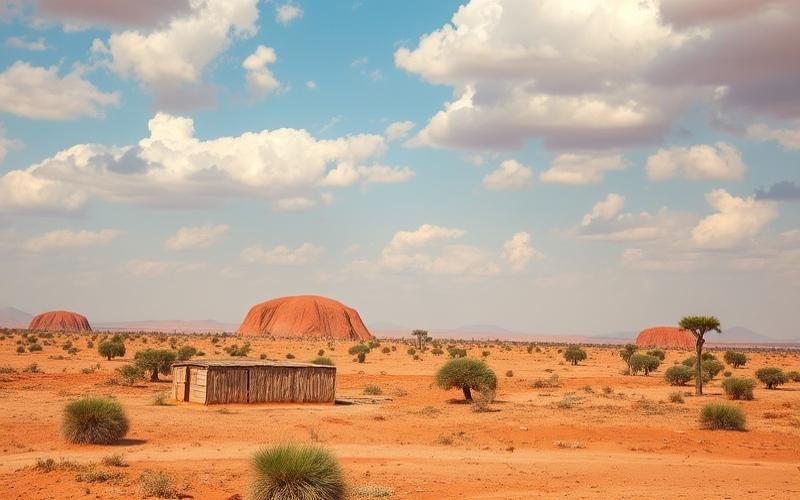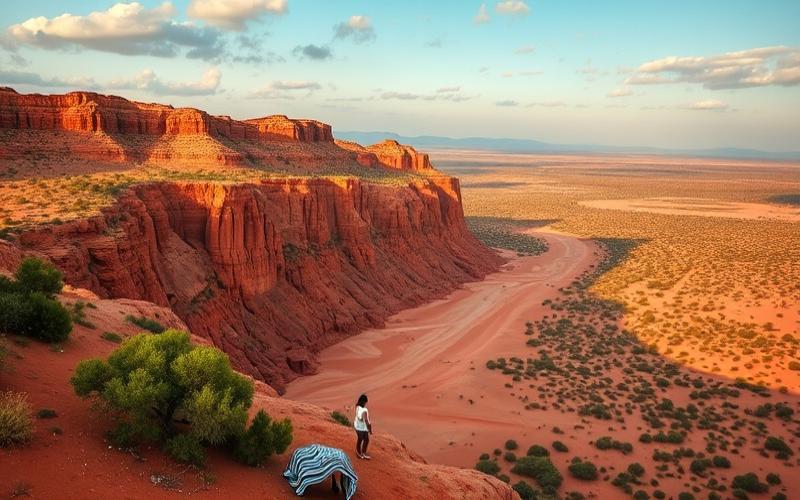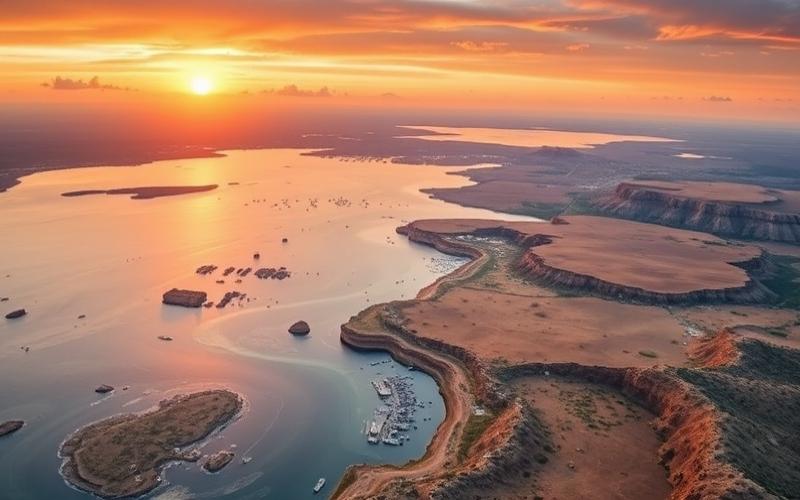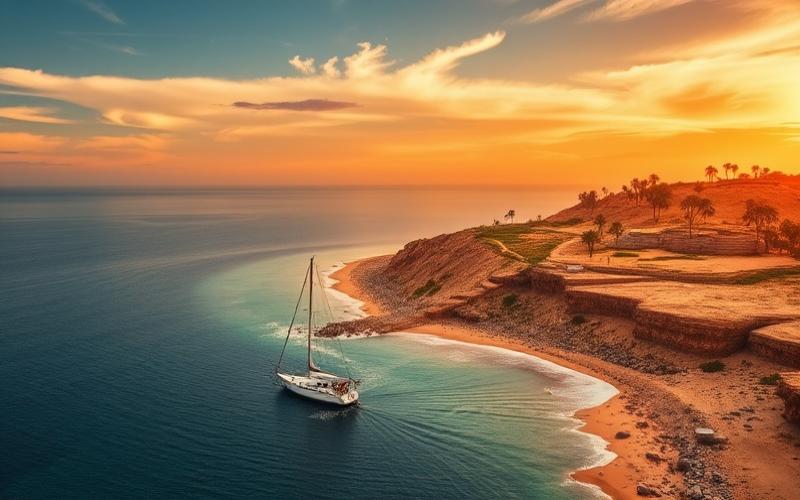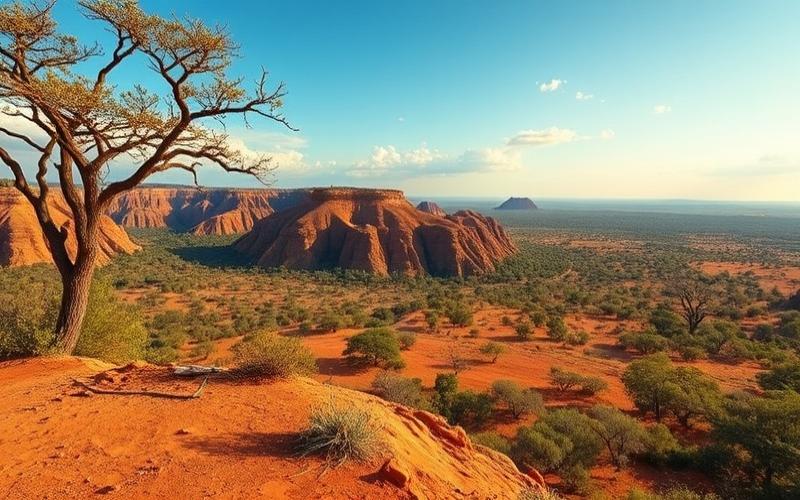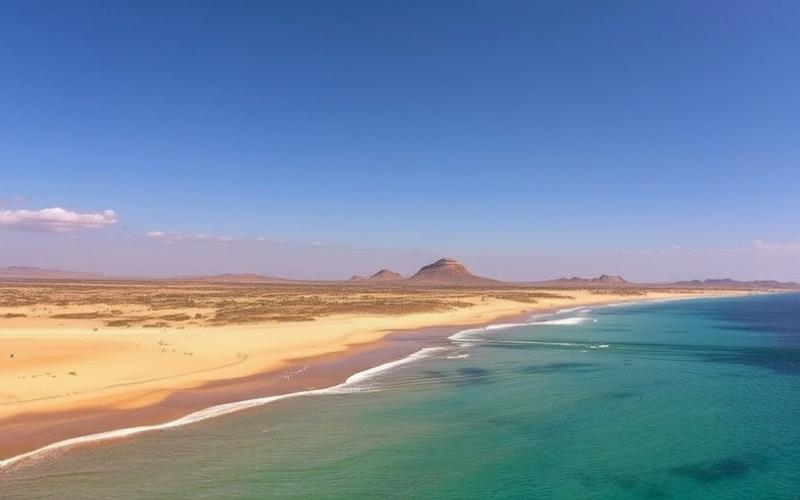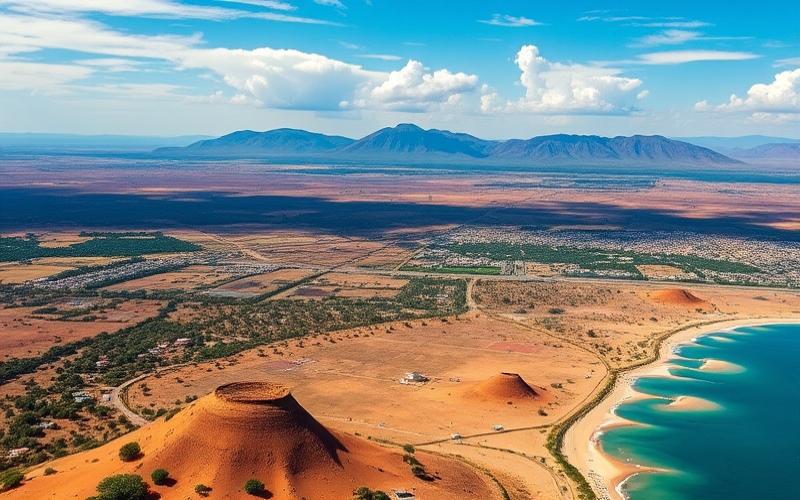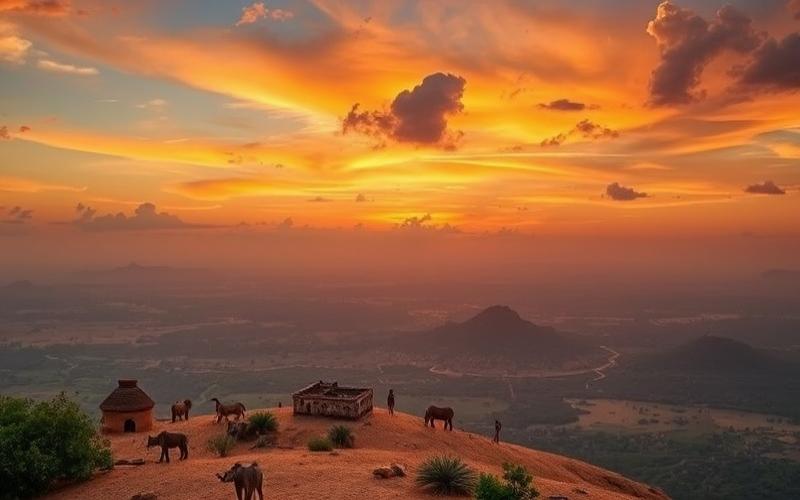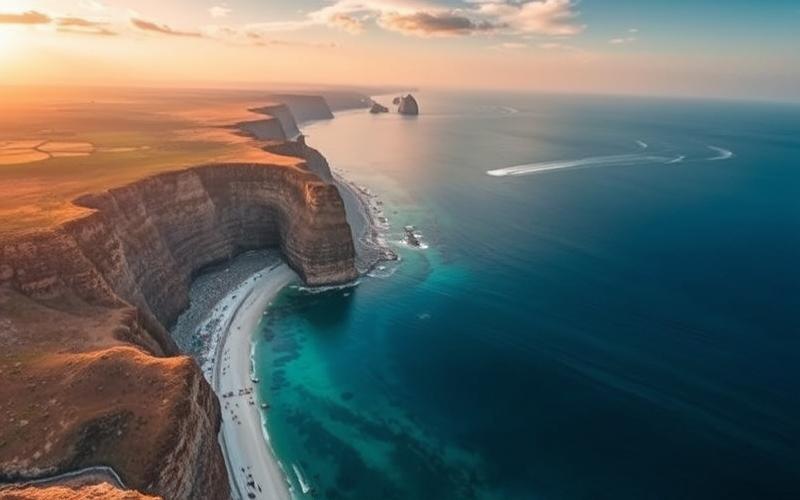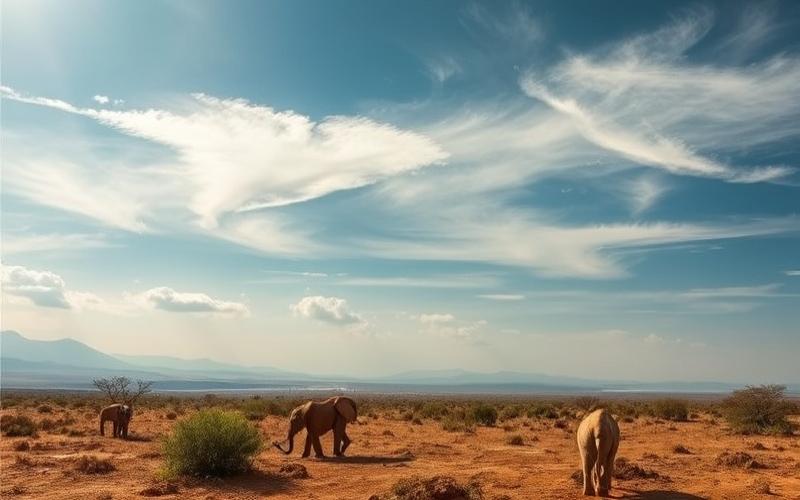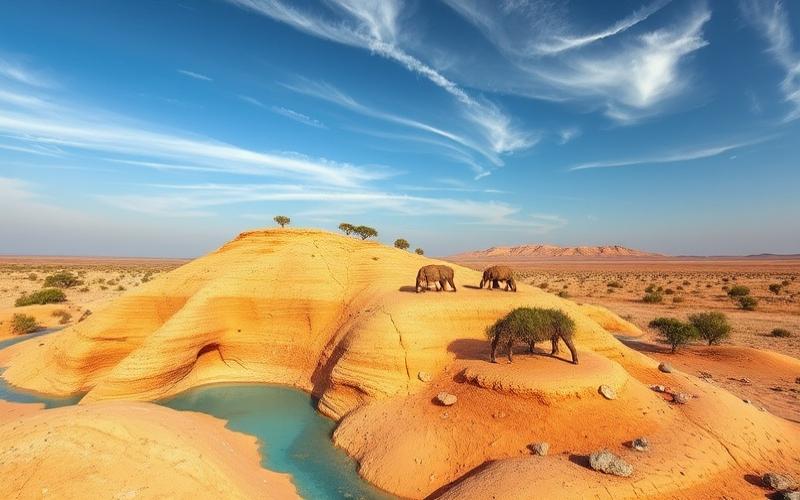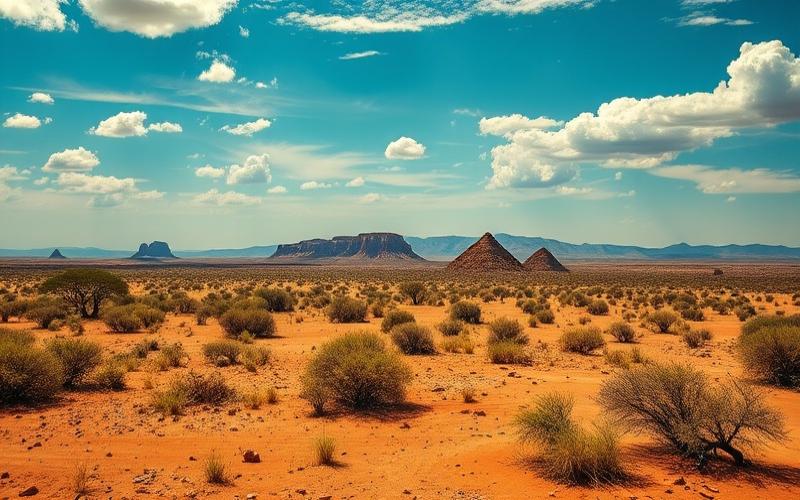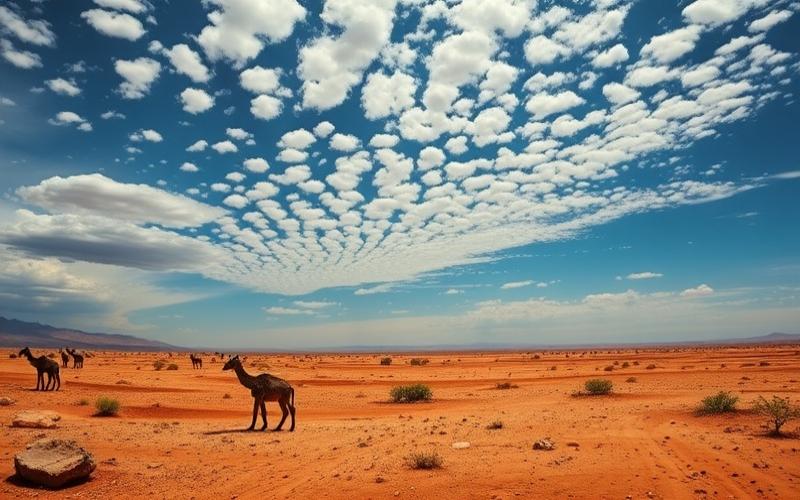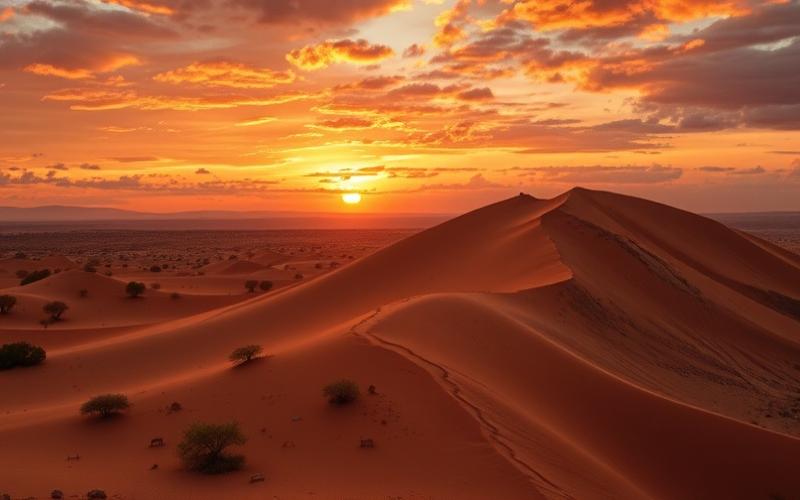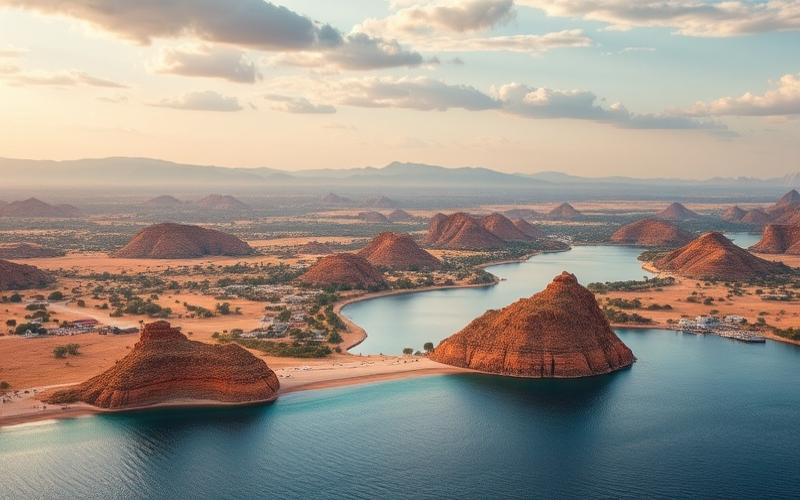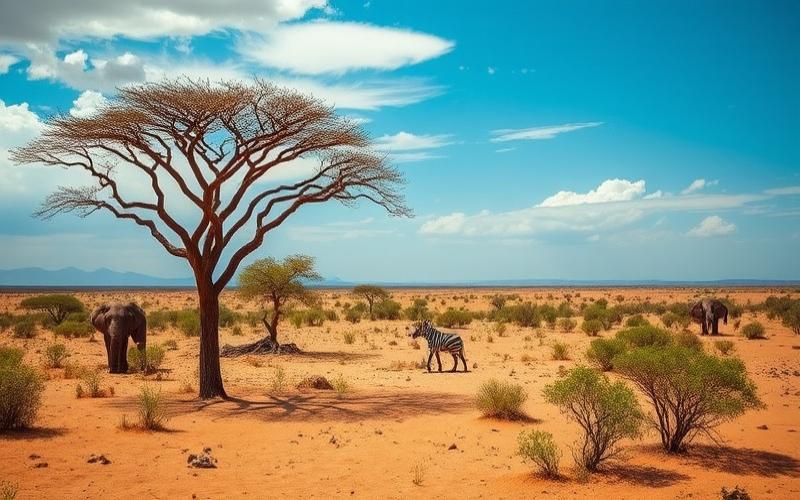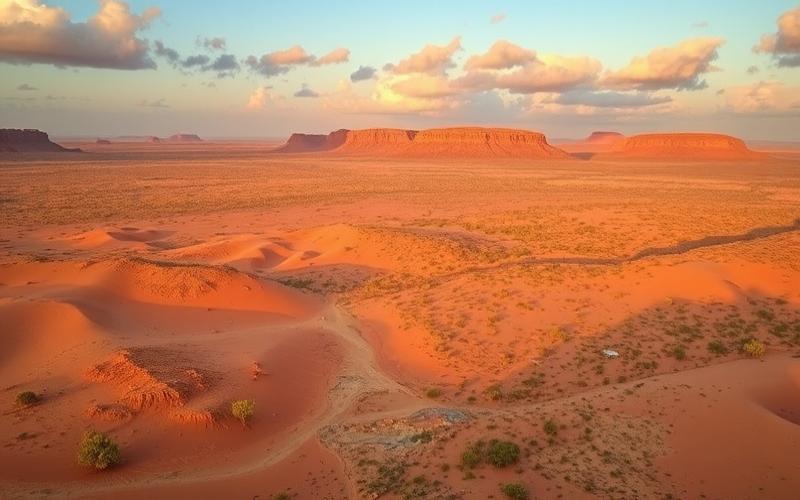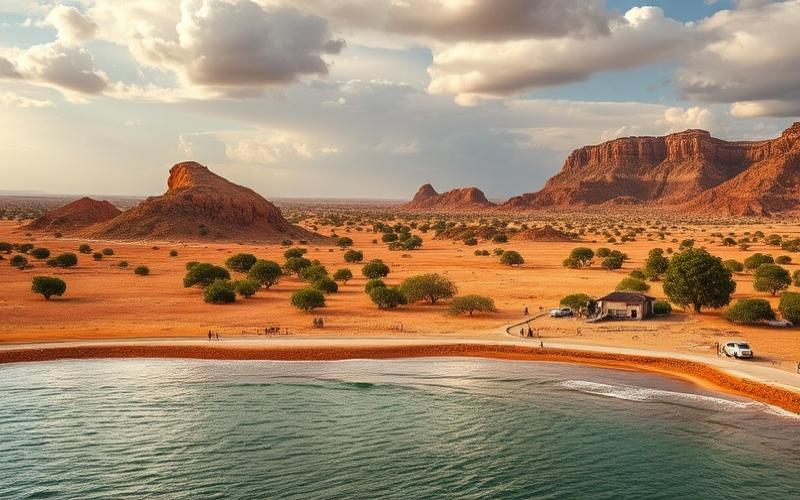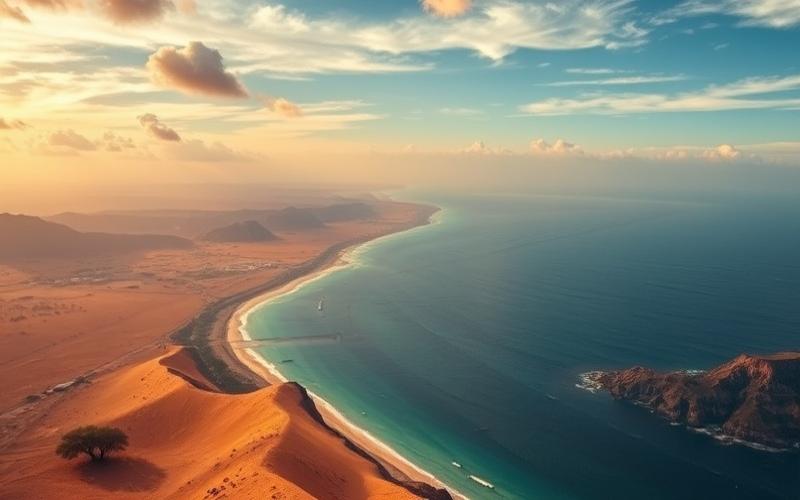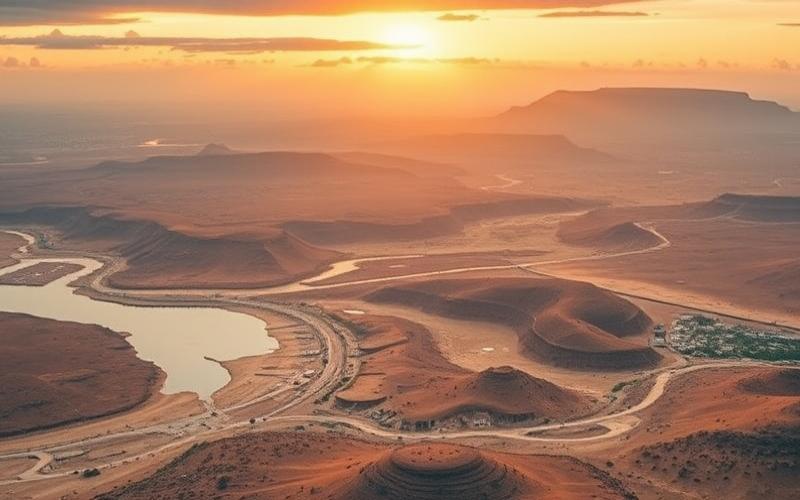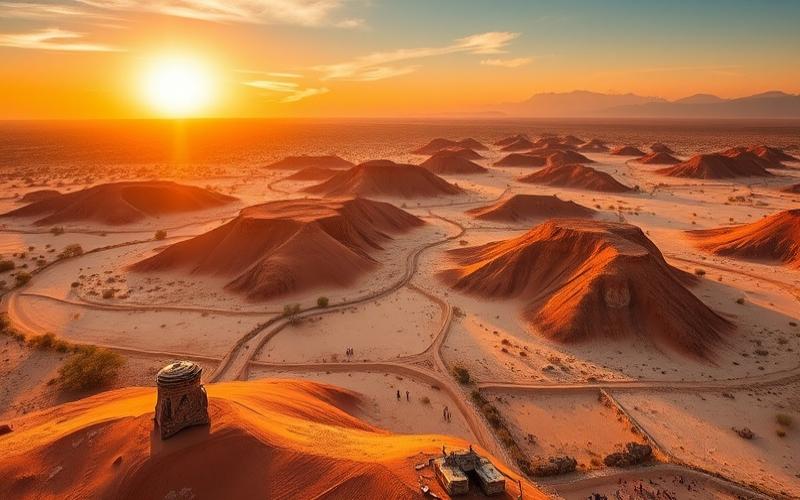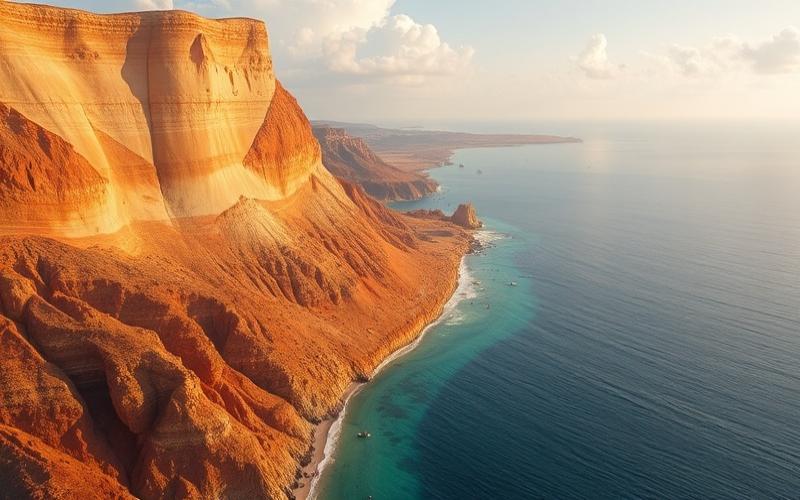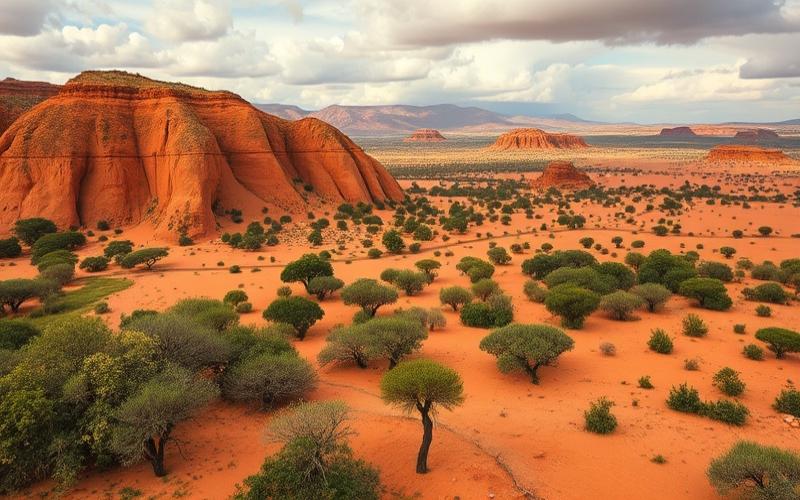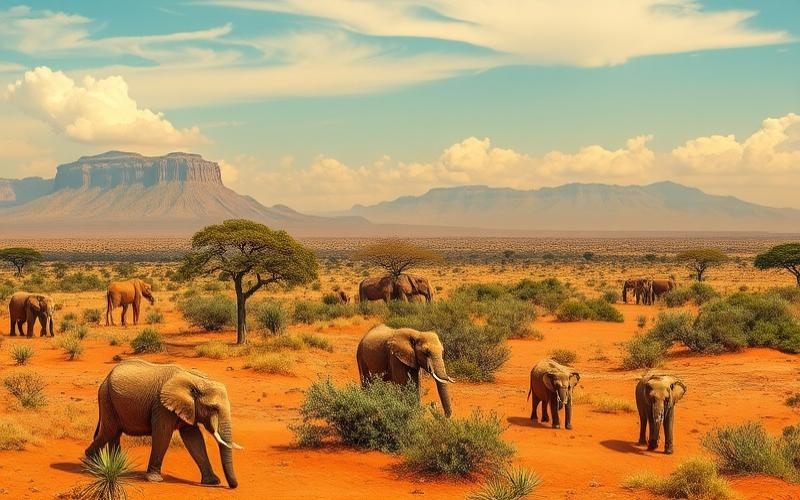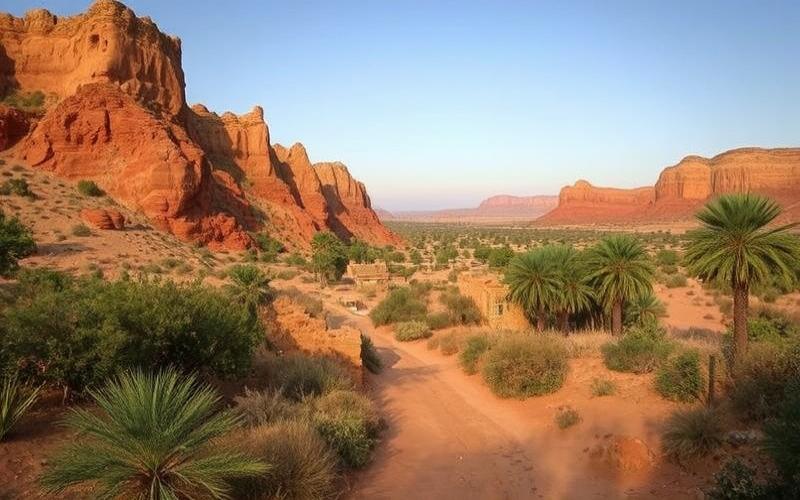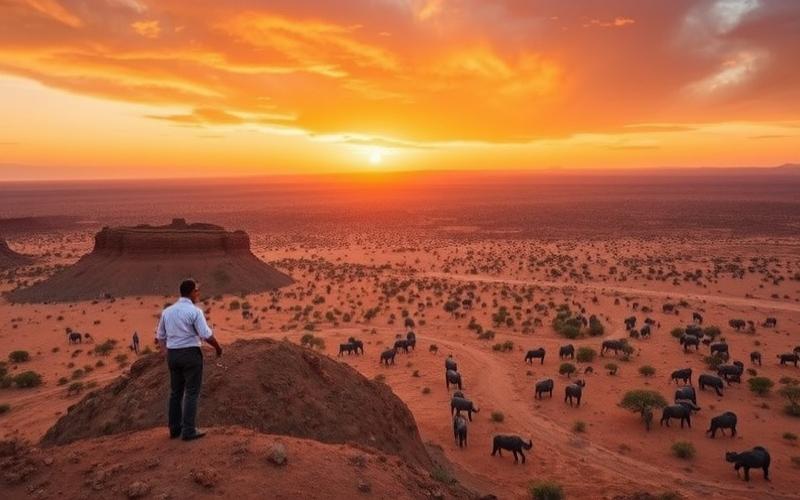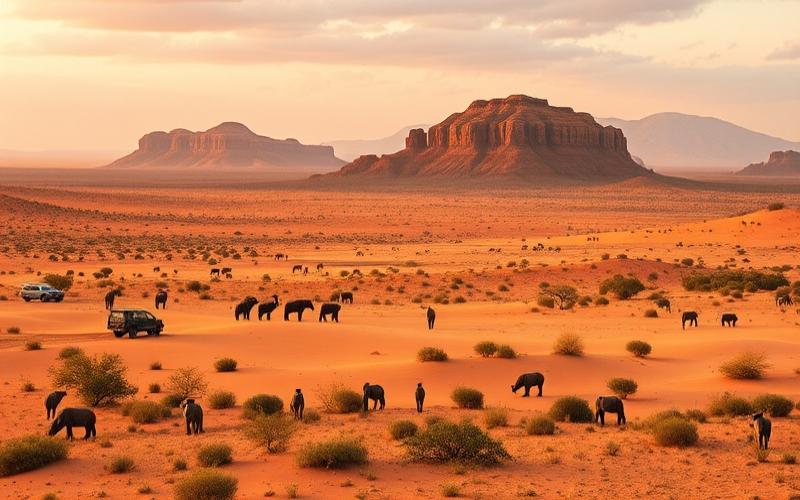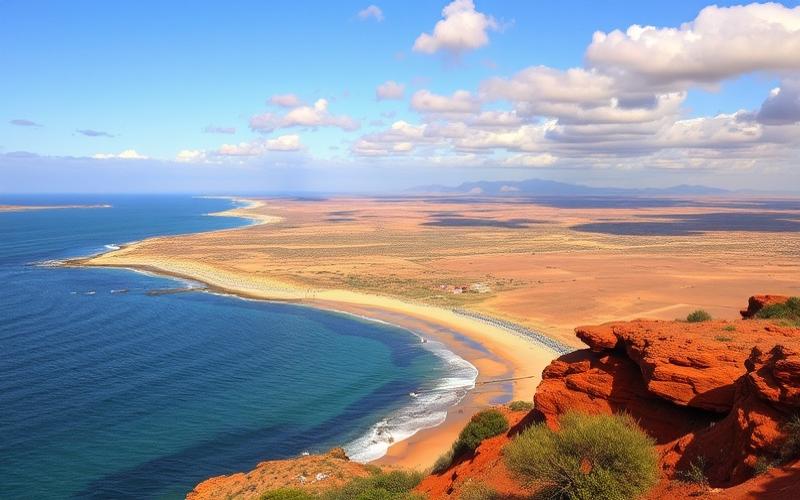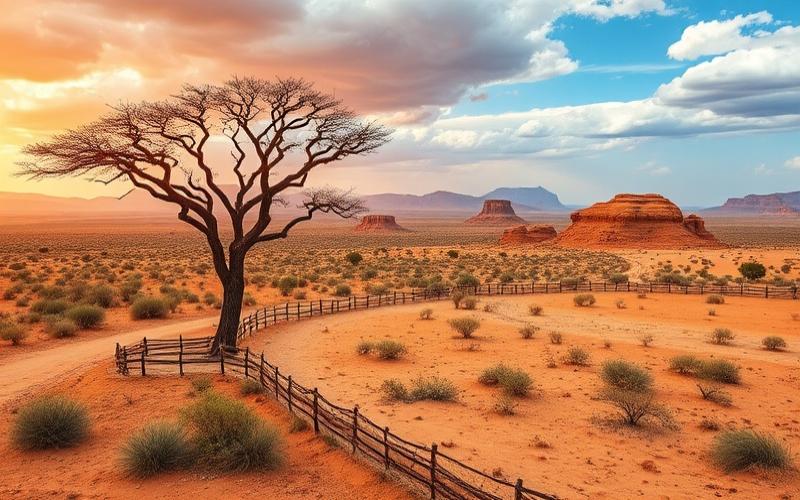
 Published on and written by Cyril Jarnias
Published on and written by Cyril Jarnias
South Africa, a country of striking contrasts and complex history, is home to a rich artistic heritage that expresses both contemporary voices and ancestral narratives. Workshops and galleries, scattered primarily throughout the vibrant cities of Johannesburg, Cape Town, and Durban, have become crucibles of innovation where different cultures and influences converge. Emerging and established artists draw inspiration from the country’s linguistic, ethnic, and natural diversity to push the boundaries of creativity in Africa. Whether through canvases bursting with color and energy, sculptures expressing social realities, or immersive multimedia installations, the South African artistic landscape offers a unique and captivating perspective on a society in full transformation.
Overview of the South African Cultural Scene
The panorama of the South African cultural scene is distinguished by a diversity of artistic movements and a strong interaction between indigenous traditions and contemporary practices, shaped by colonial and post-apartheid history.
Major Artistic Movements:
- Political Art under Apartheid: The 1980s saw the emergence of activist art denouncing the repressive regime. Artists used their creativity to express resistance, addressing themes related to identity, community, and freedom.
- Reconstruction Art: After 1990, with the liberation of Nelson Mandela and the official end of apartheid, an artistic revival centered on intercultural dialogue and activism took place.
- Hybrid Contemporary Practices: Since the 2000s, artists have blended African heritage (traditional techniques) with modern forms such as street art or installation. The exploration of plural identities has become central.
Foundational Cultural Influences:
- Colonization imposed Western aesthetic canons, which was met with a search for local expression.
- Zulu or Xhosa traditions (wood carving, beadwork) now engage in dialogue with contemporary urban mediums.
- Post-apartheid history continues to strongly inspire themes around collective trauma and living together.
Notable South African Artistic Figures:
| Name | Discipline | Notable Contribution |
|---|---|---|
| Mary Sibande | Sculpture/Installation | Exploration of Black female status via her alter ego “Sophie,” incisive social critique |
| William Kentridge | Video/Drawing | Animated works addressing historical memory & transitional justice |
| Esther Mahlangu | Painting | Contemporary reinvention of Ndebele motifs |
| Athi Patra Ruga | Performance/Textile | Questioning of queer identity & national narrative |
Interaction Between Indigenous Traditions and Contemporary Practices:
- The blending of traditional arts (tribal patterns, crafts) and innovative mediums (digital photography, multimedia installations).
- Many artists draw inspiration from ancestral symbolism to question their current or international reality.
Historical Impact:
- Colonization: introduction of European aesthetics → assertion of a distinct artistic identity in reaction
- Apartheid: censorship & marginalization → explosion of highly political protest art
- Post-apartheid: global opening → stylistic plurality & valorization of diversity
Iconic Cultural Festivals and Major Venues:
| Festival/Venue | City | Specificity |
|---|---|---|
| National Arts Festival | Grahamstown | Largest African arts festival |
| Cape Town Art Fair | Cape Town | International platform for young creators |
| Market Theatre | Johannesburg | Cradle of anti-apartheid theater |
| Zeitz MOCAA | Cape Town | Flagship museum dedicated to contemporary African art |
- Joburg Art Gallery
- Goodman Gallery
- Norval Foundation
Festivals foster international encounters while these spaces exhibit both established figures and emerging artists.
International Collaborations Illustrating This Vitality:
- Regular participation in global Biennales (notably Venice)
- Cross-residencies with foreign institutions
- Collective curatorial projects Africa-Europe-America
Role of Workshops & Galleries in Local Support:
Community workshops provide technical training for young artists; private galleries stimulate global visibility by promoting innovative creations. They play a key role in professional recognition as well as in the constant aesthetic renewal of the South African scene.
Good to Know:
The South African art movement has given rise to iconic figures like William Kentridge, while festivals like the National Arts Festival celebrate the rich interaction between indigenous traditions and contemporary practices, with a global impact. Galleries and workshops such as the Goodman Gallery play a crucial role in supporting and promoting local talent.
The Rise of Art Galleries in South Africa
The rise of art galleries in South Africa is explained by the convergence of several economic, cultural, and institutional factors.
Main Growth Factors:
- Government and Institutional Support: Various public programs, partnerships with banks and cultural institutions, and a desire to integrate South African art into international circuits have stimulated the sector.
- Economic and Cultural Growth: An expanding middle class, growing interest from local and international collectors, and the affirmation of a post-apartheid cultural identity favor the multiplication of galleries and the valorization of South African artists.
- Rise of Local Artists: The emergence of a new generation of artists, often trained locally but also exposed internationally, fuels the country’s creative vitality.
- Central Role of Major Cities: Cape Town and Johannesburg concentrate the majority of activity, with iconic neighborhoods where avant-garde galleries, museums, and alternative spaces coexist.
Table of Major Hubs and Iconic Galleries
| City | Iconic Galleries | Main Characteristics |
|---|---|---|
| Cape Town | Zeitz MOCAA, Stevenson Gallery | Bold architecture, large-scale exhibitions, strong openness to the international scene |
| Johannesburg | Goodman Gallery, Johannesburg Art Gallery | Historic platform, promotion of emerging and established artists, laboratory role |
Role of Art Fairs
- International and local fairs, such as the Cape Town Art Fair or FNB Art Joburg, serve as essential showcases. They:
- Facilitate encounters between galleries, artists, collectors, and curators from around the world.
- Contribute to the professionalization of the sector.
- Provide international visibility for South African galleries and their artists.
Challenges Faced by Galleries
- Intense Competition: The growing number of galleries, the rise of digital platforms, and international competition make visibility more difficult.
- Accessibility for Young Artists: Exhibition costs, demanding selection processes, and institutional barriers sometimes limit access for new talents.
- Fragile Economic Model: Financial balance remains precarious, with heavy reliance on fairs, patrons, and private partnerships.
Examples of Galleries and Inspiring Trajectories
- Zeitz MOCAA (Cape Town): A flagship museum of contemporary African art, it has transformed the city’s image and attracts visitors from around the world.
- Stevenson Gallery (Cape Town and Johannesburg): Known for its demanding programming and support for African artists, it regularly participates in major international fairs.
- Goodman Gallery (Johannesburg): Founded in 1966, it played a crucial role during apartheid by supporting engaged artists and fostering critical dialogue.
- Notable Curators and Artists:
- Koyo Kouoh (former artistic director of Zeitz MOCAA): Known for her inclusive vision and ability to create dialogue between Africa and the world.
- William Kentridge: World-renowned South African artist whose success has paved the way for many young creators.
- Mary Sibande: Her work on identity and memory has left a mark and inspired a new generation of artists.
Major Fairs and Events
- Cape Town Art Fair
- FNB Art Joburg
- Investec Cape Town Art Fair
List of Persistent Challenges
- Lack of public infrastructure outside major cities.
- Difficulties in accessing art for socially or geographically remote audiences.
- Need to support young artists in professionalization and career management.
The rise of art galleries in South Africa illustrates the vitality of an ecosystem where artistic innovation, entrepreneurial dynamism, and cultural affirmation intersect.
Good to Know:
Government support and economic growth have favored the development of art galleries in South Africa, especially in Cape Town and Johannesburg, with key events like the Cape Town Art Fair boosting their international visibility; however, competition and limited access for young artists remain major challenges.
Expatriate Artist Workshops in Pretoria
Impact of Expatriate Artists on the Local Scene
Expatriate artist workshops in Pretoria energize the local art scene by introducing diverse practices, creating international networks, and renewing cultural dialogues. They actively participate in collective exhibitions and collaborate with local associations, such as the Pretoria Arts Association, fostering exchange between emerging and established artists.
Examples of Renowned Workshops:
- Create Wolwespruit
- Etch Entertainment
- Glass and Fire
These workshops regularly host painting, pottery, or visual art classes open to all.
Reasons Artists Choose to Settle in Pretoria
- Stimulating Multicultural Environment
- Proximity to an Expanding Artistic Community
- Facilitated Access to Local Galleries and International Platforms
- Higher Quality of Life Compared to Other South African Metropolises
Cultural Influences Brought
| Cultural Influence | Concrete Examples |
|---|---|
| Mixed Media Techniques | Fusion of digital, acrylic, and oils |
| Contemporary Futurism | Sculptor Janko de Beer |
| Dialogue Between Visual Arts | Exhibitions blending painting & sculpture |
| International Inspiration | Networks woven with Dubai, Geneva, Venice |
Expatriates thus contribute through their eclectic approach: some combine traditional African sculpture and European abstraction; others introduce digital trends within local workshops.
Prominent Artists & Notable Collaborations
- Janko de Beer, a sculptor internationally recognized for his futuristic works exhibited both locally and abroad.
“Applying pigment to canvas is an open dialogue with the material itself.” (testimonial)
- Susanna Swart, a sculptor whose career connects Pretoria to the United States and then Europe; her works evoke a subtle blend between South African cultures and Western influences.
“My workshop has become a crossroads where several continents converse.”
Regular collaborations occur during collective exhibitions organized by the Pretoria Arts Association or during artistic events blending musical performance and visual arts. These initiatives foster genuine creative cross-pollination between expatriates and South Africans.
Anecdotes & Testimonials
“Working here has allowed me not only to reinvent my practice but also to meet an open community that celebrates difference.” — French artist settled for five years
“The diversity of techniques encountered in my workshop nourishes my inspiration every day: you find Italian ceramists as well as Nigerian painters.” — Testimonial collected during a collective opening
Diversity of Represented Artistic Practices
- Abstract Painting
- Contemporary Sculpture
- Experimental Ceramics
- Digital Art
- Interdisciplinary Performance
This plurality considerably enriches the local artistic identity while offering residents and visitors a unique immersive experience.
Good to Know:
Expatriate artist workshops in Pretoria, like that of Jane Donovan, strongly influence the local scene by blending European techniques with African motifs, while collaborating with South African artists like Sipho Ndlovu on intercultural projects. These expatriates, attracted by Pretoria’s vibrant cultural diversity, provide unique perspectives that enrich the artistic community, as evidenced by French artist Lucas Perrin who speaks of his inspiring immersion in African artistic practices.
Disclaimer: The information provided on this website is for informational purposes only and does not constitute financial, legal, or professional advice. We encourage you to consult qualified experts before making any investment, real estate, or expatriation decisions. Although we strive to maintain up-to-date and accurate information, we do not guarantee the completeness, accuracy, or timeliness of the proposed content. As investment and expatriation involve risks, we disclaim any liability for potential losses or damages arising from the use of this site. Your use of this site confirms your acceptance of these terms and your understanding of the associated risks.

